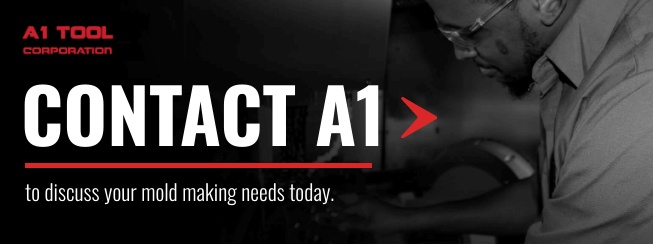6 Factors to Consider in Your Two-Shot Molding Designs
Do you need to make decisions about your two-shot molding design projects? We’ve compiled some insight to help guide your projects to ensure successful outcomes.
Two-shot molding is the ideal option for a wide range of plastic injection molding projects because it allows you to use a wide variety of designs without the extra steps of conventional molding, saving you time and money.
You can manufacture many products using this method: automotive parts, medical equipment, containers, toys and more. With the flexibility it provides, it’s not a surprise that so many engineers rely on two-shot molding design for their complex molding needs!
What is Two-Shot Molding?
Rather than just the one injection shot used in conventional plastic injection molding, multi-shot molding increases efficiency by eliminating the need to remove the partially-finished product to finish the second operation.
6 Factors to Consider When Using Two-Shot Molding
When designing parts for the two-shot molding process, consider the following to ensure an optimal production outcome:
1. Material Compatibility
When considering which materials you'll use for two-shot molding, it’s essential to consider the chemistry of the materials. While some materials have imperfect bonding, others complement each other, forming a powerful molecular adhesion.
When the adhesive quality of two compounds is unknown, conduct an adhesion test before starting production. Whenever bonding is not sufficient, fixes, such as undercuts, grooves, or shoulders, can be added to the design to improve the adhesion and lock the two compounds together.
2. Material Selection
When choosing a material for your part, relevant properties should include physical, mechanical, chemical, temperature, electrical, flammability, and UV resistance. To narrow down your material selection, you’ll need to answer several questions, such as:
- Temperature: What temperature ranges will your product be exposed to?
- Bending stiffness: How flexible or rigid do you need the material to be?
- Impact resistance: How hard does its surface need to be?
- Compression strength: How well does it stand up to heavy loads?
- UV resistance: Will the part be exposed to UV rays, such as those in outdoor settings?
- Chemical exposure: Will the part be subjected to chemicals that will impair its function, especially over time?
- Aging: What kind of shelf life does the part need to have?
3. Shut Offs
These are areas where the mold seals shut to stop the plastic flow to specific areas to create holes, snap features, and long through-holes.
In these scenarios, one half of the mold seals against the other. This provides clearance for the sealing faces of the mold to open and close without damaging each other. The minimum draft angle should be three to five degrees. The greater the draft, the greater the clearance, and the longer the mold lifetime.
4. Gate Type
The gate is the channel through which the melted resin enters the mold cavity in injection molding. The type of gate, design, and location must be considered to achieve the ideal cosmetic appearance and dimensions of the part and eliminate warping.
The two types of gates most often used in injection molding are tab and hot-runner gates:
- Tab gates are the most common and the most effective, but they are also simple and therefore may not suit your purpose.
- Hot tip gates have small circular openings. The thermostat-controlled heater affixed to the back of the mold keeps the resin hot enough to pass through the small gate opening.
5. Gate Location
This is key to achieving a uniform mold and solid surface cosmetics. In single-shot injection molding, the gate’s location enables the melt to enter through the thickest part of the opening before flowing to the narrower areas.
6. Molecular Chemical Bonding
Ideally, your substrate and second-shot resin should be chemically compatible to allow a strong bond at a molecular level. The joint between the two resins should have the longest leg or surface area possible. Choosing the right combination of materials and joint design ensures that the second shot is nearly impossible to remove.
Achieving a high-level chemical bond isn’t always possible, and even when it is, we strongly recommend incorporating an adequate mechanical bond if bonding is critical to your application.
Product Designers Enjoy the Freedom
Two-shot injection molding offers designers freedom because it reduces the number of steps in manufacturing, enabling them to create a wide range of products in a shorter amount of time and at a lower cost.
The high repeatability of this process increases its accuracy compared to traditional molding methods, along with superior mechanical bonds, more desirable aesthetics, and better ergonomics.
Want to learn if two-shot molding is suitable for your next project? Talk to the pros at A1 Tool about customized solutions for your needs.











